-
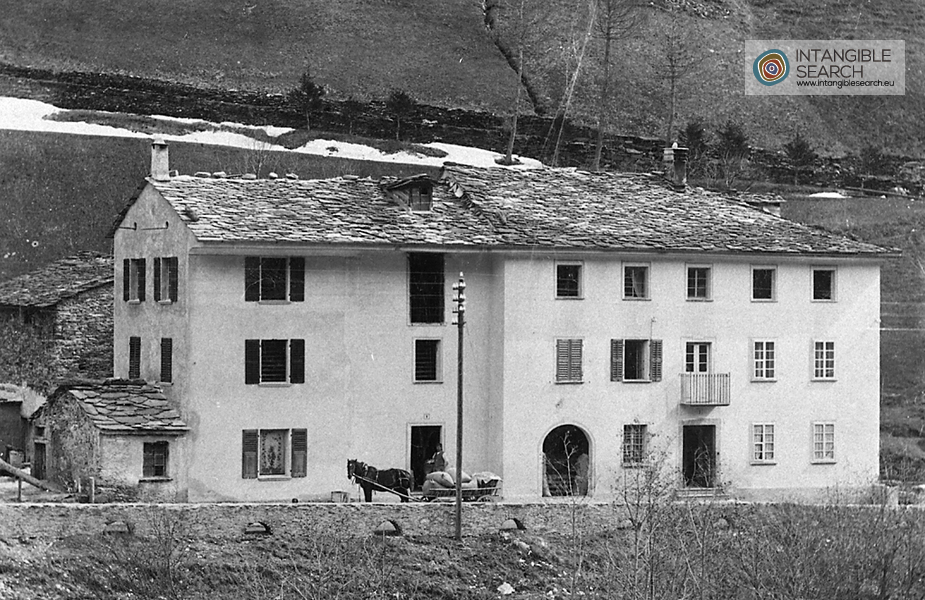
Il Molino & Pastificio di Poschiavo - Anonimo
-
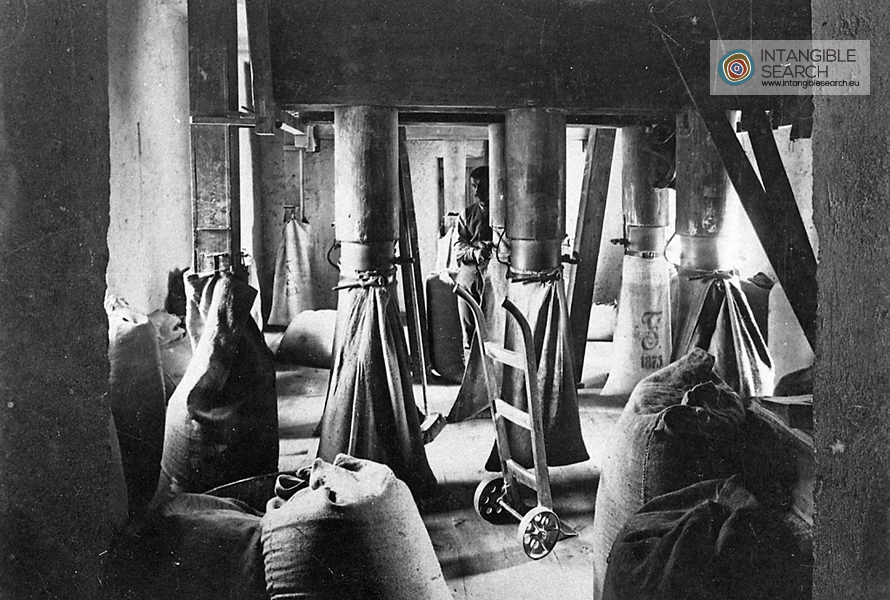
Locale per l'insaccatura della farina - Anonimo
-
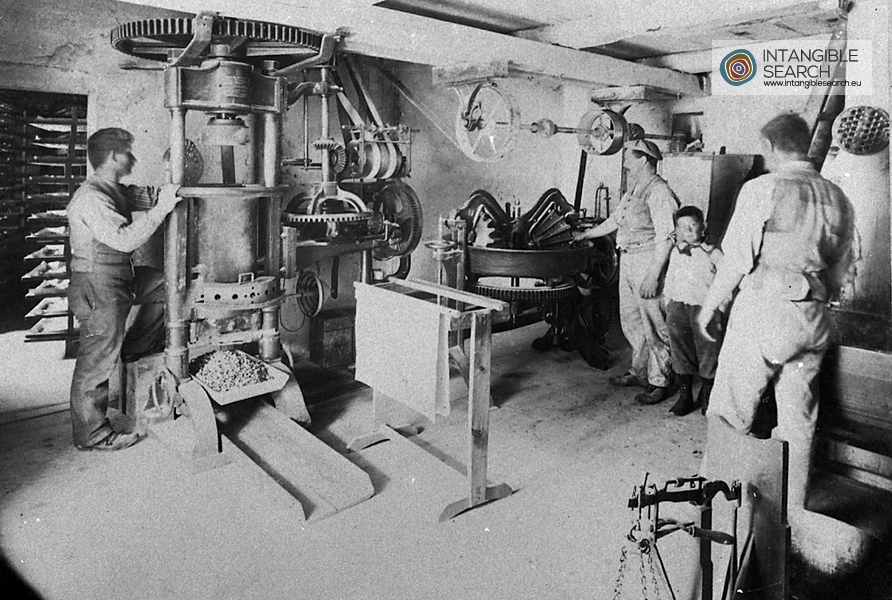
Locale per la produzione della pasta - Anonimo
-
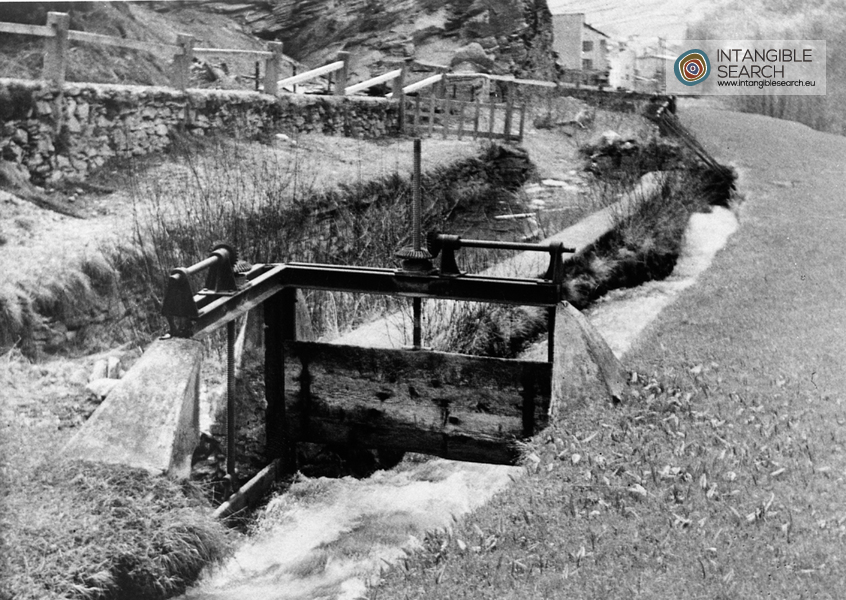
La gora che porta l'acqua del fiume Poschiavino all'edificio del Molino & Pastificio a Poschiavo - Riccardo Tognina
-
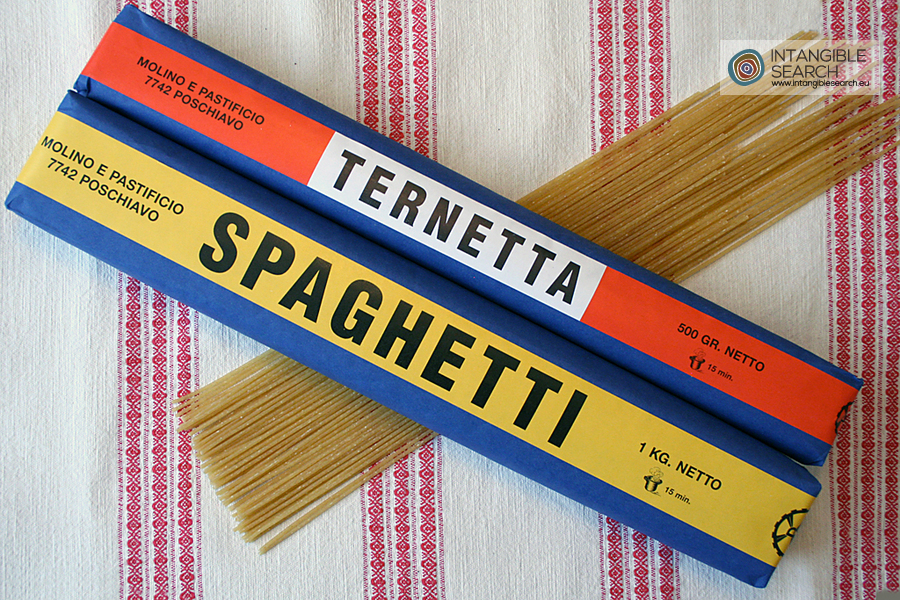
Prodotti del Molino & Pastificio - Pierluigi Crameri
-
(?)
1960
2012
Dried pasta production in Poschiavo
The Fisler family from Poschiavo has managed the last mill for five generations, which was one of a large number in the past. Water, the real engine of the pre-industrial economy and the most valuable resource for this small mountain community, properly channelled in canals or puntunai, allowed mills, sawmills and forges to function and for a certain length of time also produced the electricity for the public lighting. Water filled fountains and was used to clean sewers and wash drains. Since these canals were open air in some tracts and crossed the villages, parts of them were used to do the laundry. Perhaps it is this ancient bond with water or the history itself of their production, very paradigmatic for Poschiavo, that has transformed the most famous product of the Fislers' mill, the spaghetti, into the symbol of the identity of Poschiavo.
The Molino & Pastificio SA is the result of one of the first attempts to industrialise Valposchiavo. Today it produces, other than spaghetti, numerous types of pasta, in addition to wheat flour and rye used to make bread, corn for polenta and buckwheat for pizzoccheri. Thanks to the specialisation in high quality products, intended for a niche market, the company has maintained a wide and diverse range of production processes that go from the mill to making pastas to the trade of animal feed.
HISTORICAL-ANALYTICAL NOTES
The first historic records of the al Fulon mill, the first one the river Poschiavino meets going towards the Borgo, date back to the beginning of the seventeenth century. The mill was owned by the sisters Agostiniane of Poschiavo. Around the midpoint of the nineteenth century it passes into the hands of Hans Guler, a smithy migrated from the Prettigovia. In 1872 Samuel Fissler (1830-1895) from Zurich, married to one of Guler's daughters and lithographer at the tobacconist Ragazzi, takes possession of the property. His son Samuele (1874-1939) had migrated to Brazil at the age of 16, where he worked in sugar and coffee plantations owned by a German company, returned to Poschiavo to pay a visit to his widowed mother in 1897. On the ship that takes him back to Europe, all his savings are stolen, so he has no choice but to stay in Poschiavo. There, in 1904, he seizes the opportunity to enlarge the family mill adding to it a pastifico (pasta factory) taking advantage of the large presence of thousands of workers, most of which Italians, that were there to build the hydraulic power stations and the Bernina railway line.
This historical moment coincides with the transition from a rural society, characterised by a subsistence economy based on the family, to the start of a small class of salaried workers. This change reflects in the dietary habits of the Valposchiavo inhabitants: long-life dried pasta gradually takes over fresh pasta such as pizzoccheri and tagliatelle (taiadin in dialect) or polenta.
Lacking the capital that needed to be invested to extend the structure, in 1911 the family business becomes a public limited company. The old mills in stone are substituted by a series of rolling mills, a press for the production of pasta and a 110W electricity turbine are installed. In 1949-50 the new machines for the pasta production that are installed will be used until 2011.
After the death of Samuele Fisler the company is run by his sons Samuele (1903-1976) and Enrico (1908-1985). Later, in 1970, it is inherited by Arno Fisler. Since 2002 it is in the hands of the fifth generation of the family and is led by Davide Fisler.
The flood that destroys Valposchiavo in July 1987, wipes out al the production plant. Thanks to the effort and solidarity of many people and bodies that join together to aid the reconstruction, the company returns to business.
LEARNING AND TRANSMISSION
The knowledge about how the production plant worked, was managed and maintained as well as the production techniques has been passed on from father to son till the fourth generation of the Fisler family through training, observation and direct experience. Nowadays the profession of the miller is recognised after a three year apprenticeship that leads to a federal certificate of competence.
It is unknown how the production of dried pasta, speciality of the Mediterranean cuisine, has reached Poschiavo. Its introduction is however parallel to the great hydroelectric and railway construction sites in the alta valle during the first decade of the twentieth century.
To learn more
Web Sites
Bibliography
Almanacco del Grigioni Italiano - Le nostre industrie: Molino e Pastificio Poschiavo SA
Pro Grigioni Italiano 1992
Beobachter - Die Spaghetti-Factory
Produced by
SVIZZERA Canton Grigioni - Polo Poschiavo - Francesca Nussio
Release Date
20-SET-2013 (Francesca Nussio)
Last update
05-NOV-2014
TweetFrom Community
Tell us about it




